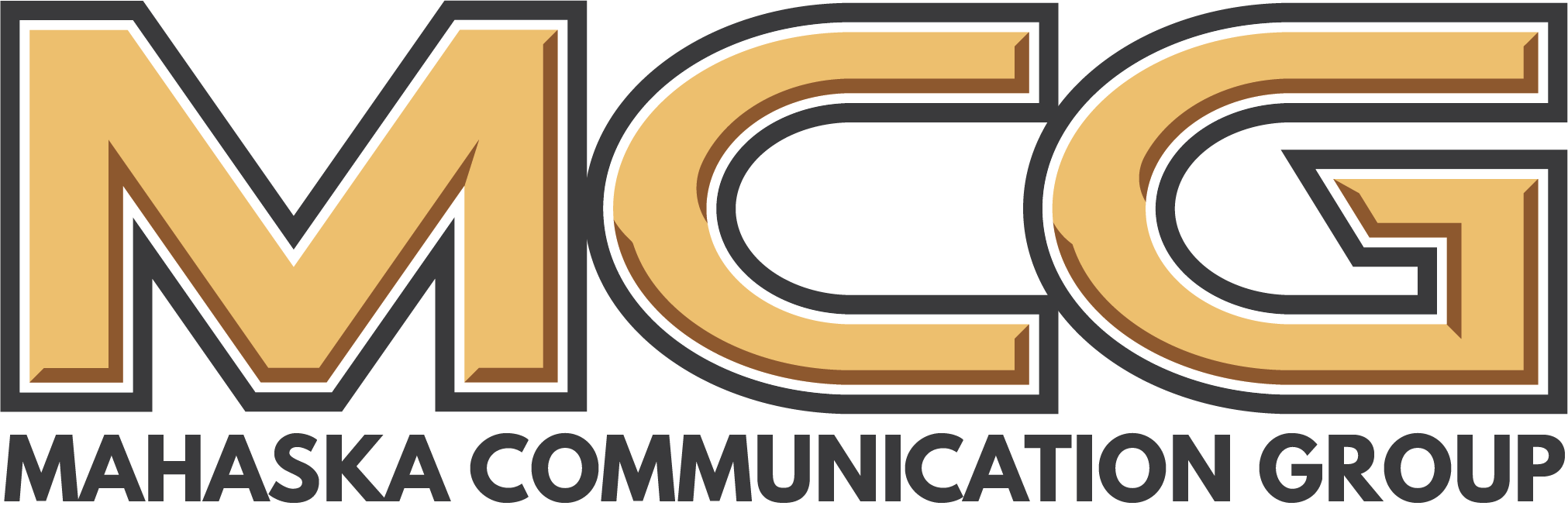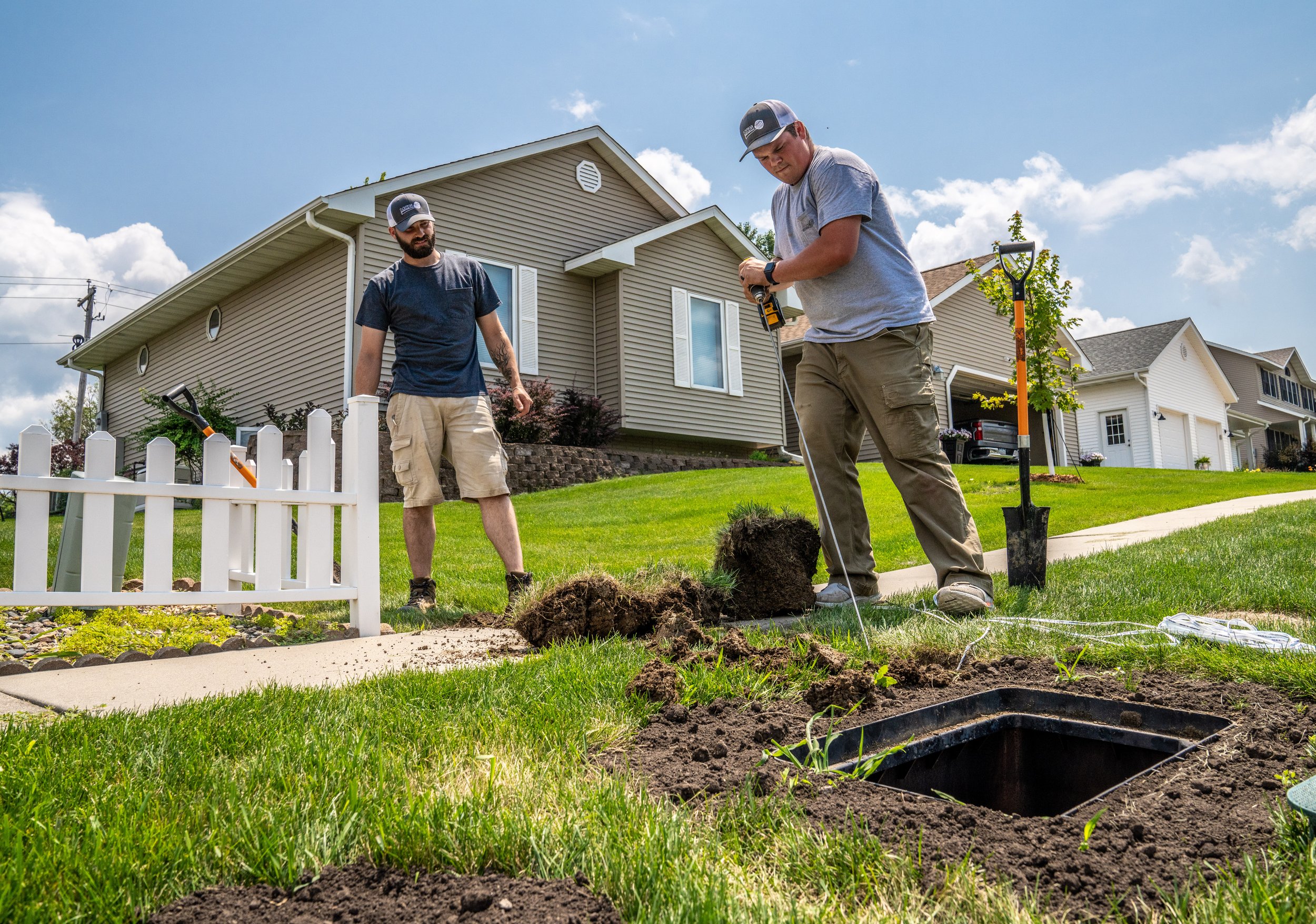Excavators are required by law to identify the area of proposed excavation using white paint, stakes, and/or white flags in a manner that will enable MCG's Outside Plant Team to know the boundaries of the proposed excavation activities.
To avoid a potentially serious accident caused by excavating, the location of all underground utility lines is marked with various colored small flags. These flags will be in your yard or neighborhood, and in some cases, grass may be marked with paint.
The flags and paint indicate that excavating is planned in your area, and MCG has contacted Iowa One Call to locate underground utilities before excavating.
Utility locate flags or markings are good for 10-14 business days. If construction hasn't been completed in that time frame, the area will need to be remarked.
Law prohibits anyone from removing or tampering with utility flags; doing so is illegal and could result in fines. In addition, you will be held responsible for damages to the utility or injuries. In cases where you accidentally removed a flag, it's best to call 811 for help.
CALL 811 or 1-800-292-8989
www.iowaonecall.com
Only the buried facilities registered with Iowa One Call will be located and marked. Private underground facilities will not be marked for locates. These can include outbuildings, hot tubs, security lighting, sprinkler systems, natural gas grill lines, or more. When a property owner has any private underground facility, they are responsible for locating those facilities or hire someone to find them.
The American Public Works Association (APWA) Uniform Color Codes for temporary marking of underground utilities are listed:
The city owns small but specific portions of your property to access and maintain city utilities. We work with the city to access these areas as we build our fiber network.
A utility easement allows a utility the right to use and access a specific area of your property for constructing, operating, and maintaining gas, electric, water, and sewer lines. The easement is often a permanent restriction on the property so that it transfers ownership with the home or property when sold. Having an easement gives the utility the right to use the land, but it does not own it.
A “right-of-way” is the surface and space above and below any real property in the city in which the city has an interest as an owner or trustee for the public for public travel, including public streets, highways, avenues, roads, alleys, easements, sidewalks, tunnels, viaducts, or bridges.
MCG's Construction and Engineering Team determines the most efficient way to provide service to a community during the design process. Our Team selects the least intrusive intersecting rear property point in the right-of-way as the general location for an inground structure which is often in the center of two intersecting property lines.
From that point, the structure location is thoughtfully identified based on the following factors:
Existing underground utilities.
Location of the underground conduit that will feed the inground structure.
Proximity to other structures.
Landscape features and/or obstructions.
Ease of accessibility for crews to construct and maintain the network.
The inground structure will be placed in the easement of your yard. The structure, weather permitting, is installed shortly after the ground is prepared. Our Team will put a fence around the hole for safety.
The structure eventually placed here houses the equipment to provide service to several homes and businesses in your area. We intend to leave your property the way we found it. You can mow over these structures as well.
The conduit MCG uses ranges in size 1 ¼ inch to 3 inches.
The mainline in the easements and right-of-ways are buried between two and four feet deep, typically 30 inches deep, and the fiber drop to the house or the inground structure may vary between 12 to 18 inches in depth.















